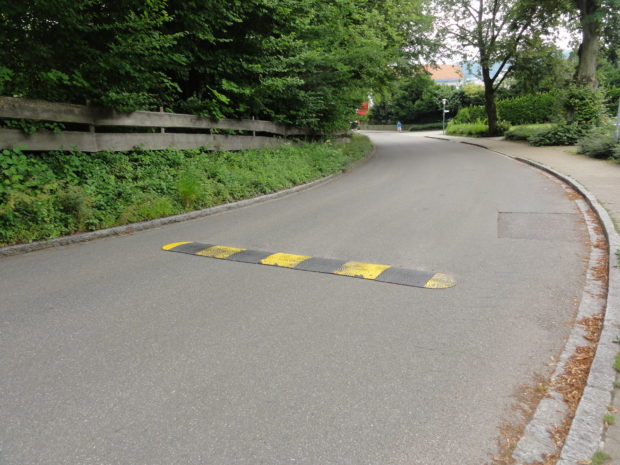Road safety has become a vital concern in today’s fast-paced world. While engineering advances have significantly improved vehicle performance, they have also given rise to increased speeds on our roads. Thus, tools to manage traffic speeds, such as speed ramps, are more critical than ever. Curiously, speed ramps are often referred to as “sleeping policemen.” This peculiar nickname provides insight into their purpose and role in traffic management and road safety.
Speed Ramps – The ‘Sleeping Policemen’
The term ‘sleeping policeman’ is a colloquial term used in many countries to describe speed bumps or speed humps. This nickname intriguingly captures the function of these traffic calming measures. Just like a policeman, they ‘enforce’ the law—in this case, the speed limit—on vehicles passing over them. They ‘sleep’ across the road, ready to ‘wake up’ and carry out their duties whenever a vehicle approaches.
The mechanism of their operation is quite straightforward—by creating an elevation on the road, they force drivers to slow down to avoid discomfort or potential vehicle damage. Despite their simplicity, speed ramps are highly effective at ensuring drivers stick to safer speeds, particularly in areas where it’s necessary for the safety of pedestrians and other road users.
The Importance of Speed Ramps in Road Safety
Speed ramps play a vital role in maintaining road safety. They are especially important in densely populated areas where pedestrians, including children and elderly individuals, are present. Places such as residential areas, school zones, parking lots, and near hospitals often have speed ramps installed to ensure drivers maintain a safe speed.
By slowing down vehicles, speed ramps drastically reduce the chances of accidents. At lower speeds, drivers have more time to react to unforeseen circumstances, and even in the unfortunate event of a collision, the likelihood of severe injuries is significantly decreased.
Speed Ramps and Pedestrian Safety
The ‘sleeping policemen’ are not just concerned with the drivers and their vehicles; they serve an equally critical purpose in ensuring pedestrian safety. Pedestrians are the most vulnerable road users, and speed ramps, by compelling vehicles to slow down, afford them safer crossings.
In areas where children or the elderly frequently cross roads, the presence of speed ramps is a necessary precaution. These measures are particularly effective around school zones, where children—who may not always adhere strictly to road crossing rules—need additional safety measures in place.
Additional Measures for Improved Road Safety
Beyond speed ramps, various other measures help enhance road safety. Other traffic calming devices, such as chicanes and pinch points, serve to reduce vehicle speed by altering the driving path or road width. Parking blocks can effectively manage vehicle movement in parking lots, while rubber corner guards protect vehicles and infrastructure in tight corners.
Furthermore, pedestrian-specific measures, such as well-marked crosswalks and pedestrian islands, offer safe zones for pedestrians to cross busy roads. Cable protectors can reduce tripping hazards in areas where cables cross pedestrian paths.
Combining these measures can provide a comprehensive approach to road safety, protecting both motorists and pedestrians alike.
Conclusion
The humble speed ramp, or the ‘sleeping policeman,’ is a silent yet crucial guardian of road and pedestrian safety. Its role in enforcing speed limits and creating safer environments for all road users cannot be overstated. While we have explored several traffic calming measures in this article, it’s evident that the sleeping policeman holds a unique and vital place in our traffic management systems. As we continue to strive for safer roads, let’s remember and appreciate the round-the-clock efforts of these ‘sleeping’ enforcers.
